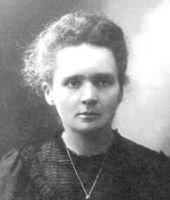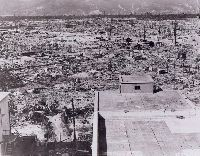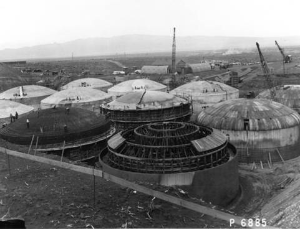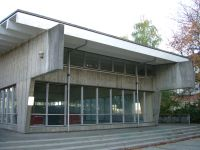Exhibit News
Particles on the Wall is excited to announce upcoming exhibits!
The REACH Museum
June 29 - October 21, 2016.
The REACH Museum
1943 Columbia Park Trail
Richland, WA 99352
Sun & Mon: Closed
Tue - Sat: 10:00AM-4:30PM
Get your copy - FREE

In keeping with our desire to share our efforts to foster a more peaceful, healthy, and sustainable world, we offer POTW for free as an e-book or PDF file.
Particles on the Wall 2nd edition from Healthy World Press
 Radiation Yesterday, Today, and Tomorrow
Radiation Yesterday, Today, and Tomorrow
List of individual science factoids
- Air Releases, Hanford
- B-Reactor Hanford
- Marie Curie
- Enrico Fermi
- Green Run, Hanford
- Hiroshima, Japan
- Ionizing Radiation and its Health Effects
- Midnite Mine Spokane
- More Hall Annex, WA
- Nagasaki, Japan
- July 10, 1998-Hanford manager not told about nuclear weapons meltdown
- July 22, 1998-DOE announces $7 billion plan to deal with tank waste
- J. Robert Oppenheimer
- Radium in Watches
- River Releases, Columbia River
- Sherwood Mine - Spokane Indian Reservation
- Spokane- A Hanford "Hot Spot"
- Tank Farms, Hanford
- Trident Missile System
- Trinity nuclear bomb
- Yellowcake factoid

Early 1900s: Marie Curie
Marie Curie, born Maria Skodowska in Warsaw, Russian-occupied Poland (November 7, 1867 - July 4, 1934), was a Polish-French physicist and chemist. She was a pioneer in the early field of radioactivity and later become the first two-time Nobel laureate and the only person to win Nobel Prizes in two different fields of science (physics in 1903 and chemistry in 1911).
More: http://www.toxipedia.org/display/toxipedia/Marie+Curie

1920s: Radium in Watches
"Not to worry," their bosses told them. "If you swallow any radium, it'll make your cheeks rosy."
The women at Radium Dial sometimes painted their teeth and faces and then turned off the lights for a laugh.
Many of the women developed bone cancer because of radiation emitted by the ingested radium.
More: http://www.toxipedia.org/display/toxipedia/radium+girls

September 1944: Hanford's B Reactor
B Reactor, the world's first industrial-scale nuclear reactor, was built at Hanford, WA during World War II as part of the top-secret Manhattan Project to develop the atomic bomb.
More: http://www.toxipedia.org/display/wanmec/B+Reactor

July 1945: The "Trinity" Nuclear Test
On July 16, 1945, the first nuclear test, code-named "Trinity," took place in the desert north of Alamogordo, New Mexico. The test released the equivalent of 19 kilotons of TNT, far mightier than any weapon ever used before. The plutonium used in this bomb was produced in the B Reactor at Hanford, WA.
More: http://www.toxipedia.org/display/toxipedia/Trinity+Nuclear+Test

August 6, 1945: Hiroshima
On August 6, 1945 the first of 2 atomic bombs was dropped on Japan. The bomb "Little Boy" was dropped from the Enola Gay, killing an estimated 80,000 people and destroying 68% of the city's buildings. The effects of the bomb were felt for years after, as people became sick from radiation poisoning.
More: http://www.toxipedia.org/display/toxipedia/Hiroshima

August 9, 1945: Nagasaki
The United States dropped a plutonium bomb named "Fat Man" on the city of Nagasaki, Japan, on August 9, 1945. Approximately 40,000 people died immediately after the bombing and another 40,000 people died of radiation poisoning by the end of 1945. The plutonium used in this bomb was produced in the B Reactor at Hanford, WA.
More: http://www.toxipedia.org/display/toxipedia/Nagasaki%2C+Japan

Green Run: Radiation Release
Green Run refers to a secret U.S. Air Force experiment at Hanford that released somewhere between 7,000 and 12,000 curies of iodine-131 into the air on December 2-3, 1949.
More: http://www.toxipedia.org/display/toxipedia/Green+Run+-+Hanford

Hanford's Air Releases
Most of Hanford's air releases were from the chemical process used to separate plutonium and uranium from fuel rods. Some of the air releases came from the nuclear reactors. The major radioactive releases occurred between 1944 and 1957. The largest releases were between December 1944 through 1947, when there were no filters on the stacks of the separations plants. Radioactive materials in the form of gases, vapors[MM13], and particles were released. Left picture: B-reactor.
Current Estimates of Radiation Released into the Air by Hanford, 1944-1972
Iodine-131: 739,000 curies
Ruthenium-103: 1,160 curies
Ruthenium-106: 388 curies
Strontium-90: 64.3 curies
Plutonium-239: 1.78 curies
Cerium-144: 3,770 curies
More: http://www.toxipedia.org/display/wanmec/Hanford+radiation+releases

Trident Missile
The Trident missile is a submarine-launched ballistic missile (SLBM, MIRV type) armed with nuclear warheads. These missiles are launched from nuclear-powered ballistic missile submarines (SSBNs).
Trident missiles are carried by 14 active US Navy submarines (Ohio-class) and four Royal Navy submarines (Vanguard class). Trident I was first launched on January 18, 1977 at Cape Canaveral. The Bangor submarine base in Washington State stations 9 US Navy Ohio-class submarines containing Trident missiles.
More:http://www.toxipedia.org/display/wanmec/Trident+Missile

Columbia River Contamination
The first eight nuclear reactors at Hanford used large amounts of water from the Columbia River to cool the reactor cores. The water went through the reactors once, then was returned to the Columbia River even though it contained radioactive materials. Radioactive materials that built up inside the reactors were also regularly flushed loose and released into the river.
Current Estimates of Radiation Released into the Columbia River by Hanford, 1944-1971
Arsenic-76: 2,500,000 curies
Neptunium-239: 6,300,000 curies
Phosphorus-32: 230,000 curies
Sodium-24: 12,000,000 curies
Zinc-65: 490,000 curies
More: http://www.toxipedia.org/display/wanmec/Hanford+radiation+releases

Radioactive Storage Tanks
The U.S. Department of Energy's (DOE) Hanford Site in southeastern Washington State, which sits adjacent to the Columbia River, is home to 53 million gallons of chemical and radioactive waste from over three decades of plutonium production.
The chemical and radioactive waste is stored in 177 large underground tanks. ORP and its tank farms contractor, Washington River Protection Solutions (WRPS), are transferring this waste from 149 older single-shell tanks (SST) to 28 newer double-shell tanks (DST) to reduce environmental risk. The SSTs have a single shell of carbon steel surrounded by reinforced concrete. The SSTs are the oldest waste storage tanks at Hanford and as many as 67 of these tanks have leaked up to one million gallons of waste into the soil and caused groundwater pollution.

More Hall Annex, University of Washington
"From April 1961 to June 1988, the UW operated a 100-kilowatt Argonaut research reactor, one of about 10 built for research universities in the United States. Designed at the Argonne National Laboratory near Chicago in the late 1950s and installed with funds from federal grants, the Argonaut reactor was at the center of the UW's nuclear engineering department, an elite graduate-level program, for nearly 30 years." -The Daily, 2007
In 2009, More Hall Annex was officially listed on the National Register of Historic Places.
More: http://www.toxipedia.org/display/wanmec/More+Hall+Annex

Midnite Mine, Spokane, WA 1955-1981
The Midnite Mine, a uranium mine on the Spokane Indian Reservation, produced 2.9 million tons of uranium ore between 1955 and 1981. All production from the mine was from open pits: two pits are still open and fill with rainwater and groundwater, and the other four pits have been back-filled with soil from the area. The mine is now an EPA Superfund site because it has elevated levels of toxic heavy metals and radionuclides that negatively impact the surrounding environment and communities. The roots of plants growing around the mine had radioactive uranium levels as much as 11 times higher than plants from elsewhere in the area. Fish in nearby Lake Roosevelt have been found to contain heavy metals, which many link to the mine.

Sherwood Mine- Spokane Indian Reservation, 1978-1984
The Sherwood Mine, a uranium mine on the Spokane Indian Reservation, produced 2,100 tons of uranium ore per day between 1978 and 1984. Decommissioning of the mill began in 1992 and cleanup activities concluded in 1996. The radioactive tailings, along with mill site soils, building equipment, and contaminated debris, were encapsulated in an engineered disposal cell constructed on site. This disposal cell contained about 2.9 million tons of uranium mill tailings and an additional 350,000 cubic yards of contaminated mill site materials. The estimated radium-226 activity in the impoundment is 470 curies.

Spokane- A Hanford "Hot Spot"
When the Hanford Nuclear Reservation was producing plutonium, the city of Spokane was considered a radiation "hot spot." Radioactive substance such as iodine-131 and plutonium were released into the air and transported with the wind, which generally blew southeast to the Tri-Cities, toward Walla Walla, then turned northeast toward Spokane and Northern Idaho. However, the wind direction could change during the releases, sending a pollution plume in two or more directions. These plumes could later combine and cause reoccurring hotspots, such as Spokane.
Example
Lorem ipsum dolor sit amet, consectetuer adipiscing elit.
Aliquam fermentum vestibulum est. Sed quis tortor.




